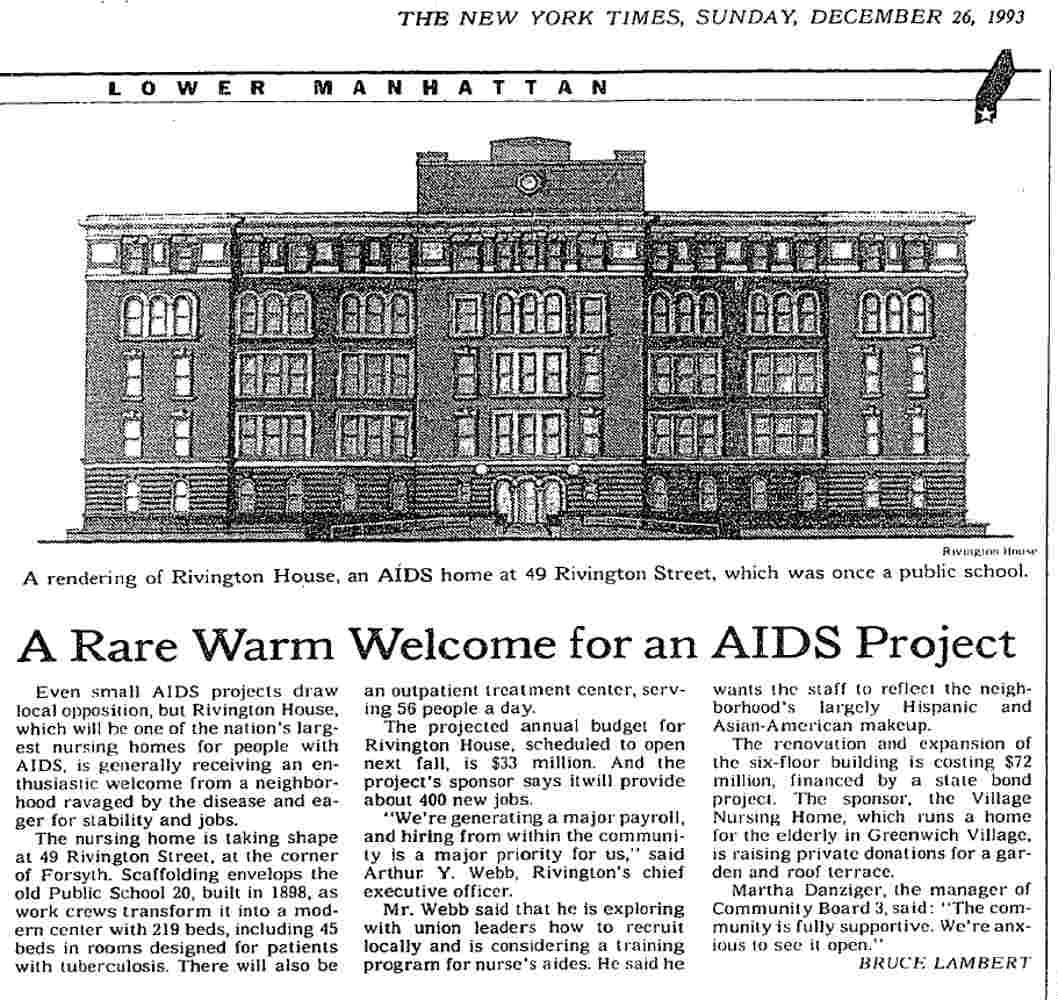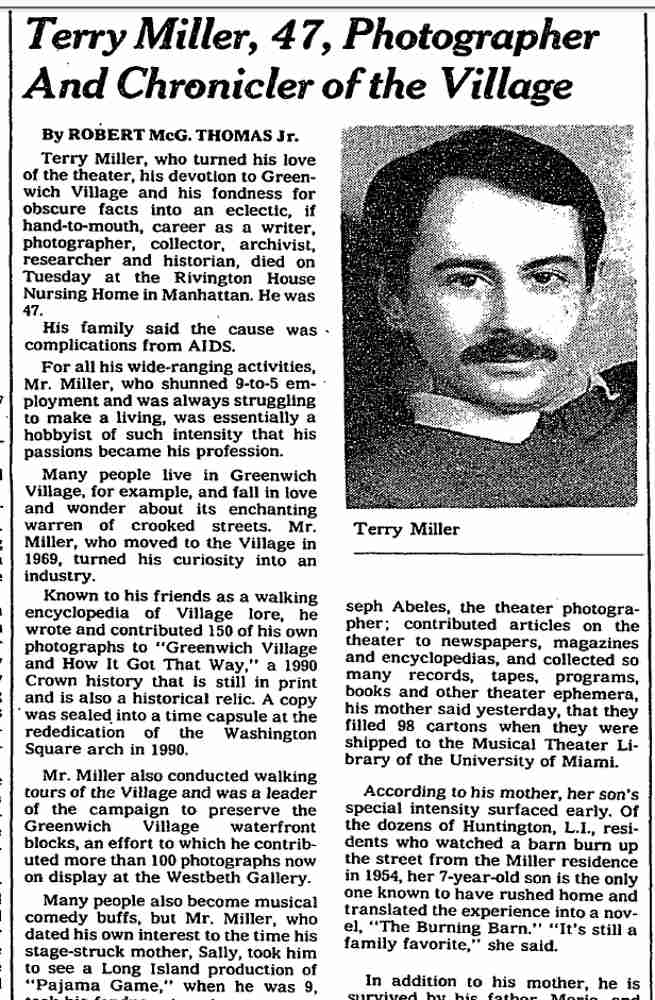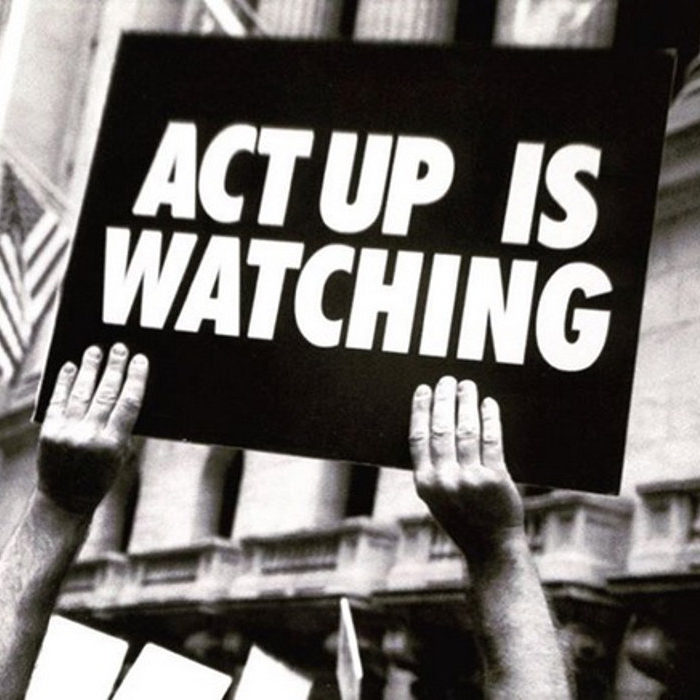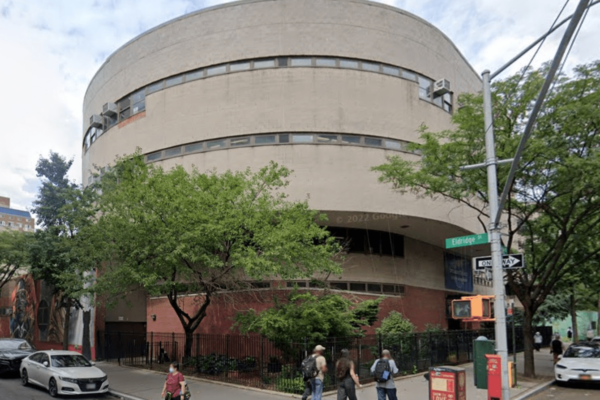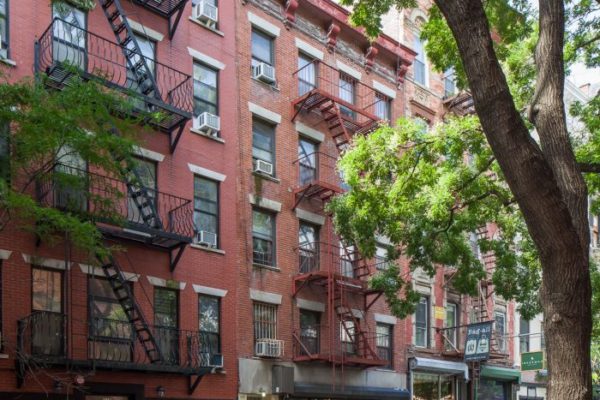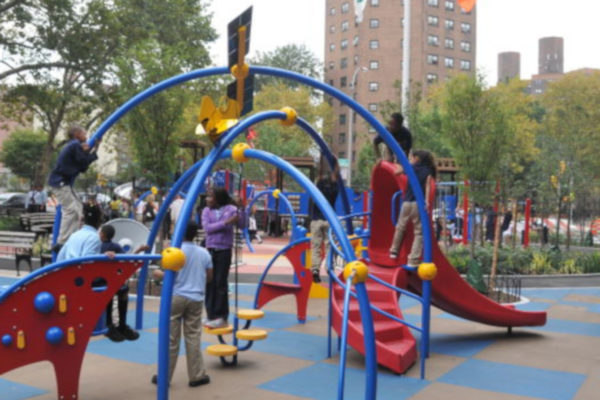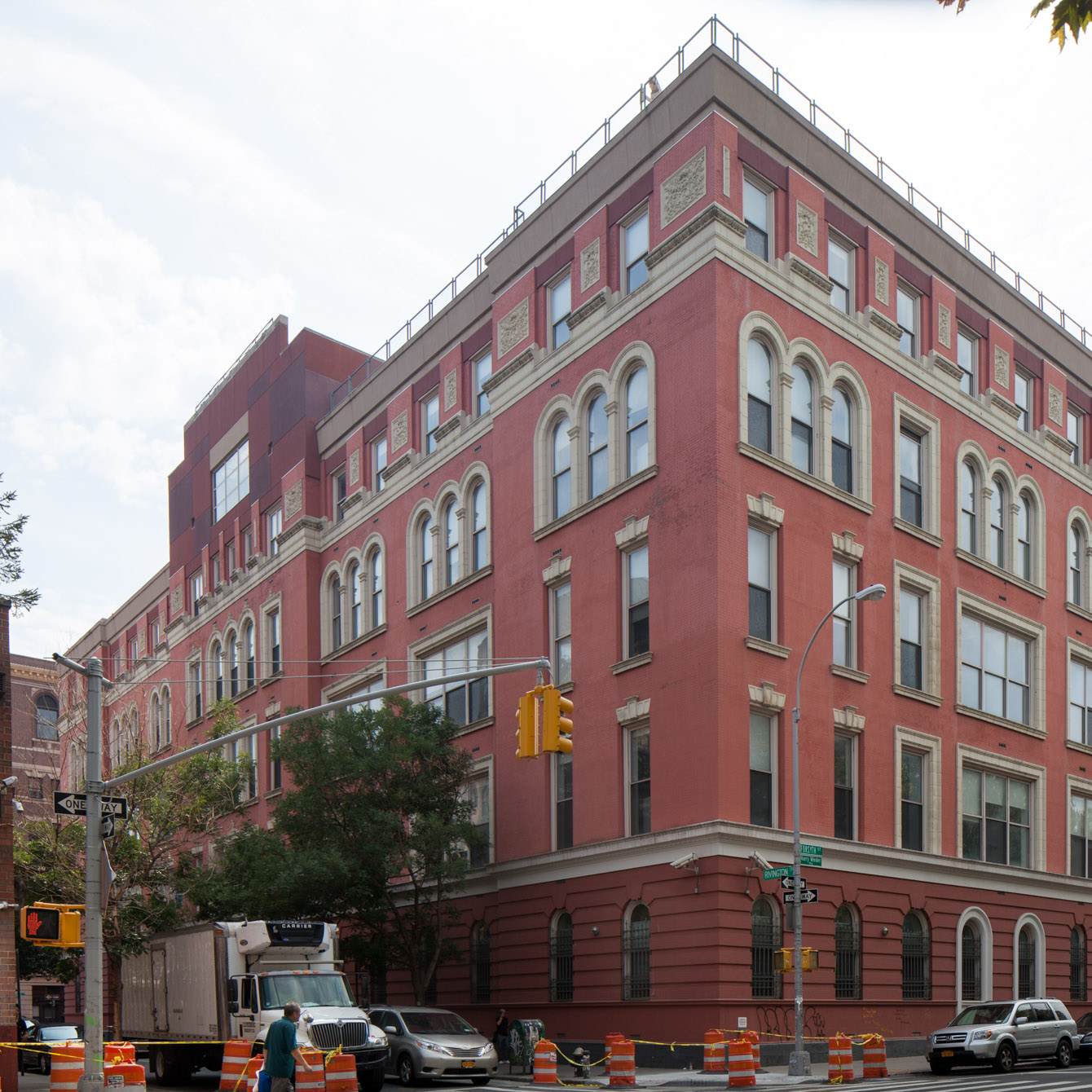
Rivington House
overview
In 1995, this former public school re-opened as a 219-bed nursing home for AIDS patients, the largest of its kind in New York City.
After almost twenty years of service, Rivington House was controversially sold by the City of New York to a private developer in 2015.
On the Map
VIEW The Full MapHistory
Numerous health facilities were established in New York City following the outbreak of HIV and AIDS cases in the 1980s. From 1993 to 1994, former Public School 20 was converted to Rivington House, a VillageCare-operated nursing home for people living with AIDS. The architecture firms of Perkins & Will and Davis, Brody & Associates were responsible for the conversion.
Rivington House opened in 1995 as the largest residential healthcare facility for AIDS patients in New York City and, perhaps, the nation. Equipped with 219 beds and an outpatient treatment center, it was originally considered an end-of-life nursing home for most of its patients; length of stay was 12 to 15 days and the death rate stood at nearly 50%. By 1997, new drug therapies were prolonging the lives of many people living with AIDS and, as a result, the death rate at Rivington House declined by 20% and the length of stay increased to 120 days.
Terry Miller (1948-1995), a long-time Greenwich Village resident who was well known for his passion for documenting the neighborhood’s history, died at Rivington House in 1995 from AIDS-related complications. He had previously written text and contributed 150 of his own photographs to the book, Greenwich Village and How It Got That Way (1990), and advocated for the preservation of historic blocks along the Village waterfront.
Rivington House operated until 2014. A year later, in a controversial move that sparked community and citywide backlash, the City of New York sold it to a developer who paid to lift the building’s deed restriction in order to create upscale residential housing (the deed had required that the building be used as a nonprofit residential healthcare facility in perpetuity).
Entry by Amanda Davis, project manager (March 2017).
NOTE: Names above in bold indicate LGBT people.
Building Information
- Architect or Builder: C.B.J. Snyder
- Year Built: 1898
Sources
Bruce Lambert, “A Rare Warm Welcome for an AIDS Project,” The New York Times, December 26, 1993.
Joyce Mendelsohn, The Lower East Side Remembered and Revisited, second edition (New York: Columbia University Press, 2001).
Lynda Richardson, “An AIDS Nursing Home Finds It Is No Longer the Last Stop,” The New York Times, January 25, 1997.
Robert McG. Thomas, Jr., “Terry Miller, 47, Photographer and Chronicler of the Village,” The New York Times, August 6, 1995.
Do you have more information about this site?
This project is enriched by your participation! Do you have your own images of this site? Or a story to share? Would you like to suggest a different historic site?
